How Multi-Sensor Systems Detect Plant Diseases
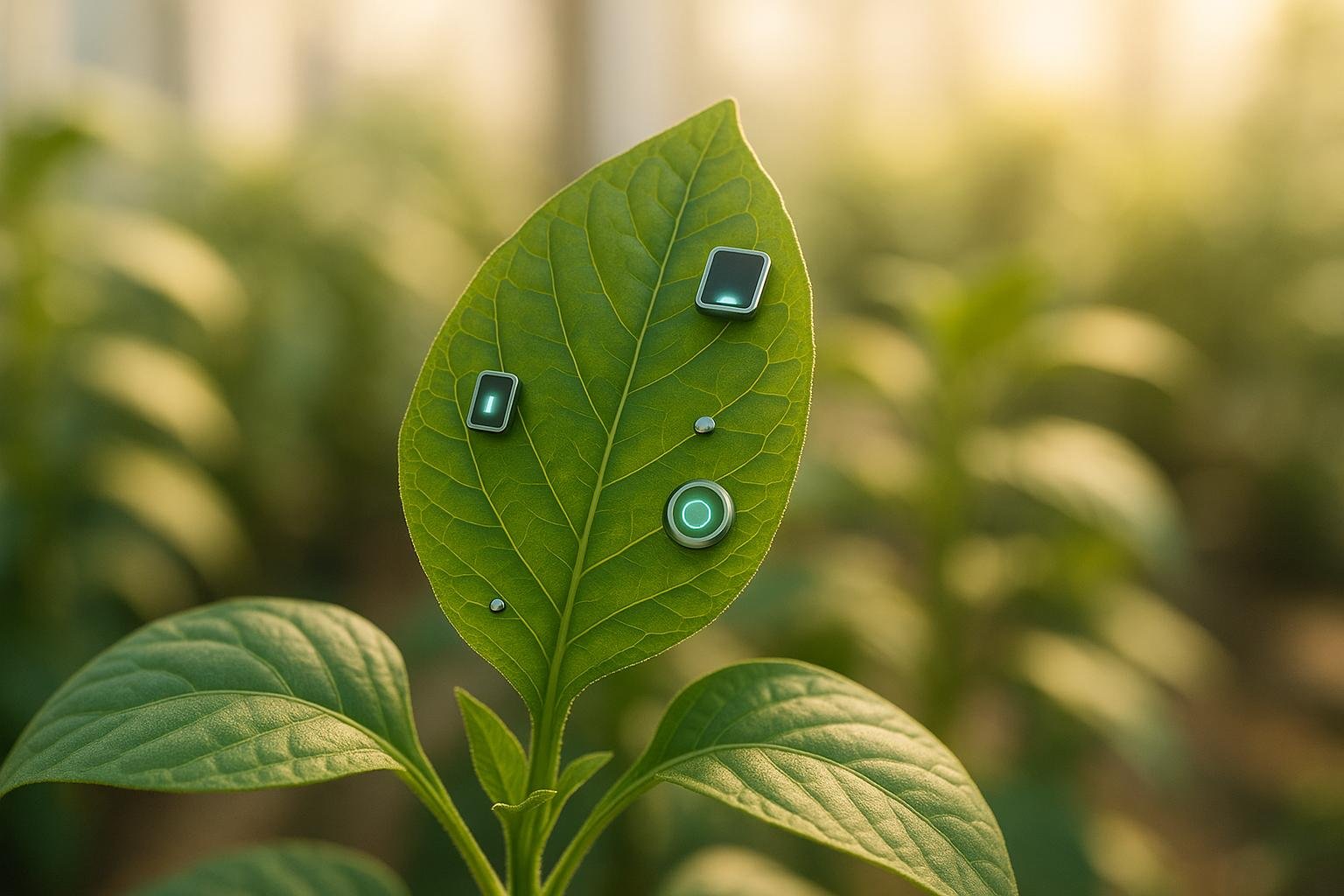
Multi-sensor systems are transforming how farmers detect and manage plant diseases, offering faster, more accurate, and data-driven solutions compared to traditional manual inspections. These systems combine tools like cameras, thermal sensors, and environmental monitors to identify diseases early - often before symptoms are visible. Here's what you need to know:
- Key Tools: RGB cameras spot visible damage, while multispectral and hyperspectral sensors detect subtle changes in plant health. Thermal sensors identify stress through temperature variations, and environmental monitors track conditions like humidity and soil moisture.
- How It Works: Data from these sensors is transmitted via IoT networks, merged using algorithms, and analyzed by AI to provide actionable insights. This enables farmers to target treatments precisely, saving time and resources.
- Benefits: Early disease detection, reduced chemical use, and real-time monitoring improve crop management efficiency.
- Challenges: High costs, technical expertise, and data management remain obstacles, particularly for small farms.
Multi-sensor systems are a step forward in agriculture, helping farmers protect crops and reduce losses with precision tools and AI-driven insights.
Integrated Plant Disease Management using IoT-enabled Sensors

Types of Sensors for Disease Detection
Multi-sensor systems use a variety of specialized tools to monitor plant health from different angles. Each sensor type plays a specific role, contributing to early and accurate disease detection. Let’s break down the key types of sensors and how they work together to create a well-rounded detection system.
RGB Cameras for Visual Detection
RGB cameras capture color images that can highlight visible symptoms like leaf discoloration or damaged fruits. These cameras are especially helpful for tracking disease progression through high-resolution visuals. However, they have limitations - they typically only detect issues after symptoms are visible and can struggle in low-light environments or when external factors, like weather, interfere with image clarity.
Multispectral and Hyperspectral Imaging
Multispectral and hyperspectral sensors take plant monitoring to the next level by analyzing light reflectance beyond the visible spectrum. This allows them to detect physiological changes in plants before symptoms are noticeable to the naked eye. Multispectral sensors gather data from several distinct wavelength bands, while hyperspectral sensors go further, analyzing many narrow spectral bands for more detailed insights. This capability provides an early warning system for potential outbreaks, enabling proactive responses.
Thermal Sensors and LIDAR
Thermal sensors focus on surface temperature variations, which can indicate plant stress, while LIDAR (Light Detection and Ranging) creates detailed 3D maps of plant structures. LIDAR data, including plant height, canopy density, and biomass, helps pinpoint how diseases might be spreading. This precise mapping supports targeted treatments, reducing the need for widespread interventions and conserving resources.
Environmental Monitoring Sensors
Environmental sensors measure factors like temperature, humidity, soil moisture, pH levels, and air quality - conditions that often influence disease development. These sensors provide real-time data that, when combined with visual and spectral information, offer a comprehensive view of plant health. For instance, monitoring soil acidity or water stress can help identify high-risk areas before any symptoms appear, allowing growers to act quickly and effectively.
How Multi-Sensor Systems Work
Multi-sensor systems transform field data into practical insights for managing plant diseases. By leveraging various sensor types, these systems combine multiple data streams into actionable information that helps farmers make informed decisions.
Data Collection Through IoT Networks
At the heart of modern multi-sensor systems lies the Internet of Things (IoT). IoT networks connect a variety of sensors across agricultural fields, creating a web of data collection points that communicate wirelessly with centralized systems.
These sensors transmit data at regular intervals using low-power wireless protocols, ensuring continuous operation without frequent battery replacements. This setup allows farmers to monitor field conditions in real time. For example, if environmental sensors detect sudden spikes in humidity or temperature - conditions that could lead to disease outbreaks - alerts are immediately sent to farm management systems, enabling swift action.
The deployment of these systems depends on the size of the field. Small plots often use fixed sensors, while larger farms might rely on drone-mounted devices to cover more ground efficiently.
Combining Data from Multiple Sensors
The real power of multi-sensor systems comes from their ability to merge data from different sources, a process known as data fusion. By integrating visual imagery, spectral data, thermal readings, and environmental measurements, these systems provide a comprehensive view of plant health and field conditions.
Algorithms play a key role here, prioritizing sensor inputs based on their reliability and relevance to specific diseases. For instance, when monitoring for fungal diseases, sensors that measure humidity and leaf wetness take precedence. On the other hand, thermal sensors are more critical for detecting bacterial infections that cause temperature changes.
Spatial and temporal analysis further boosts accuracy. Spatial correlation ensures data from sensors in the same area are analyzed together. For example, if thermal sensors detect elevated temperatures in one part of the field and multispectral imaging reveals stress in the same location, the system flags that zone for immediate attention. Temporal analysis tracks changes over time, identifying patterns that signal disease progression. A steady rise in canopy temperature, coupled with declining chlorophyll levels from spectral imaging, creates a clear pattern that triggers alerts. Quality control measures also filter out errors caused by weather, sensor glitches, or temporary anomalies.
AI Analysis for Disease Detection
Once data fusion is complete, artificial intelligence (AI) steps in to analyze the combined inputs and deliver precise assessments of disease risks. Machine learning algorithms detect subtle patterns, such as spectral changes in plant leaves, that indicate disease even before symptoms are visible.
AI can differentiate between various stress factors - whether disease, nutrient deficiencies, or water shortages - by comparing current data to baseline readings of healthy plants. Predictive models then forecast disease risks by evaluating environmental conditions and plant health indicators. For example, if soil moisture, temperature, and humidity levels match conditions that favor disease development, the system generates a risk assessment and suggests preventive actions.
Decision support systems simplify the AI’s complex analysis into straightforward recommendations. Instead of overwhelming farmers with raw data, these systems might suggest actions like “Apply fungicide to Field Section C within 48 hours” or “Increase irrigation in Block 7 to reduce stress.”
The AI also continuously improves through feedback loops. Farmers’ reports on disease occurrences or successful interventions update the system’s knowledge base, refining its predictions and recommendations for similar conditions in the future.
🚀 Ready to Reinvent Your Garden?
Join thousands of homeowners who have transformed their gardens using our AI design tool. Upload one photo to explore endless possibilities.
Get your AI garden designs →Benefits and Challenges of Multi-Sensor Systems
Multi-sensor systems bring a range of advantages to detecting plant diseases, but they aren't without their hurdles. Understanding both the benefits and challenges is crucial for agricultural operations looking to adopt these technologies effectively.
Benefits of Multi-Sensor Systems
Early Disease Detection
Multi-sensor systems can identify diseases before visible symptoms appear by picking up subtle changes in chlorophyll levels or temperature. This early detection gives farmers the chance to act quickly, applying treatments before the problem escalates.
Improved Accuracy
Unlike traditional visual inspections that rely on human judgment and may miss subtle signs, these systems provide precise, measurable data. This reduces the risk of false positives and ensures that real threats are addressed promptly.
Non-Invasive Monitoring
Using methods like drone-mounted sensors or fixed installations, these systems monitor crops continuously without disrupting growth. This is particularly useful for fragile crops or during sensitive growth stages.
Precision Treatment Application
With detailed spatial data, farmers can target specific areas that need treatment instead of applying chemicals across entire fields. This not only saves resources but also minimizes environmental impact while maintaining effective disease control.
Real-Time Decision Making
By providing continuous data and rapid analysis, multi-sensor systems enable quick responses to conditions that might encourage disease outbreaks.
Challenges and Limitations
High Initial Costs
Setting up a comprehensive multi-sensor system can be expensive, making it a tough investment for smaller farms with limited budgets.
Technical Expertise Required
These systems often require specialized knowledge for installation, calibration, and maintenance. Farmers may need to hire experts or rely on external support, which can add to operational costs and complicate use in remote areas.
Data Overload
The sheer volume of data generated by these systems can overwhelm traditional farm operations. Storing, processing, and securing this data requires robust infrastructure and additional resources.
Environmental Factors
Sensor performance can be affected by environmental conditions like dust, moisture, extreme temperatures, or bad weather. For example, wind can disrupt drone sensors, while heavy rain or fog may interfere with optical readings.
False Alerts and Misinterpretations
Natural plant variations or environmental stressors may trigger false alarms. Unusual weather or soil conditions can also lead to incorrect conclusions, potentially resulting in unnecessary interventions.
Integration Challenges
To fully leverage the benefits, these systems need to integrate seamlessly with existing farm management software. Many farms already use established tools for tasks like crop planning or inventory management, which may require custom programming or additional middleware to ensure compatibility.
While these challenges can be significant, the advantages often outweigh the drawbacks for farms capable of meeting the financial and technical requirements. Successfully implementing multi-sensor systems hinges on finding the right balance between their potential and the obstacles they present.
sbb-itb-4d6a8dd
Scaling Multi-Sensor Systems for Large Areas
Expanding multi-sensor systems to cover large areas comes with its own set of challenges. From managing vast amounts of data to ensuring reliable connectivity, scaling these systems requires careful planning and robust solutions.
Designing IoT Networks for Wide Coverage
Creating an IoT network for large-scale use starts with thoughtful sensor placement and ensuring reliable communication. The network must handle numerous sensors spread across a wide area while maintaining a steady and efficient data flow.
Using mesh networks can be a game-changer. In this setup, sensors relay data to one another, extending coverage without relying on a single hub. This not only boosts coverage but also minimizes the risk of communication breakdowns.
Strategically placed gateways are key to maintaining connectivity. To reduce maintenance, energy-efficient sensors, like solar-powered units, are ideal. In areas where sunlight is limited, low-power wide-area networks (LPWAN) can help conserve energy while supporting continuous monitoring.
Another essential piece of the puzzle is edge processing. By performing basic data analysis locally, sensors can send only critical alerts or summaries to the cloud. This approach cuts down on bandwidth usage, lowers data transmission costs, and speeds up response times.
Cloud-Based Data Processing
Cloud platforms play a big role in processing and storing the enormous volumes of data generated by large-scale sensor networks. These platforms allow for real-time analysis while also maintaining historical data for trend tracking and machine learning.
As sensor networks grow, scalable storage solutions become vital. Managing the large amounts of data generated monthly requires efficient strategies to balance storage needs with cost considerations.
Machine learning algorithms, trained on historical data, can identify patterns and predict potential issues, enabling quick responses during critical situations. Automated alert systems further streamline operations by filtering through massive datasets to flag real threats, cutting down on false alarms. These systems consider factors like weather, crop stages, and historical trends to ensure alerts are both timely and relevant.
For ease of use, data visualization dashboards simplify complex information. These dashboards can be customized for different users - like field managers or agronomists - offering features such as interactive maps of problem areas and trend graphs over specific time periods.
How AIGardenPlanner Supports Large Projects
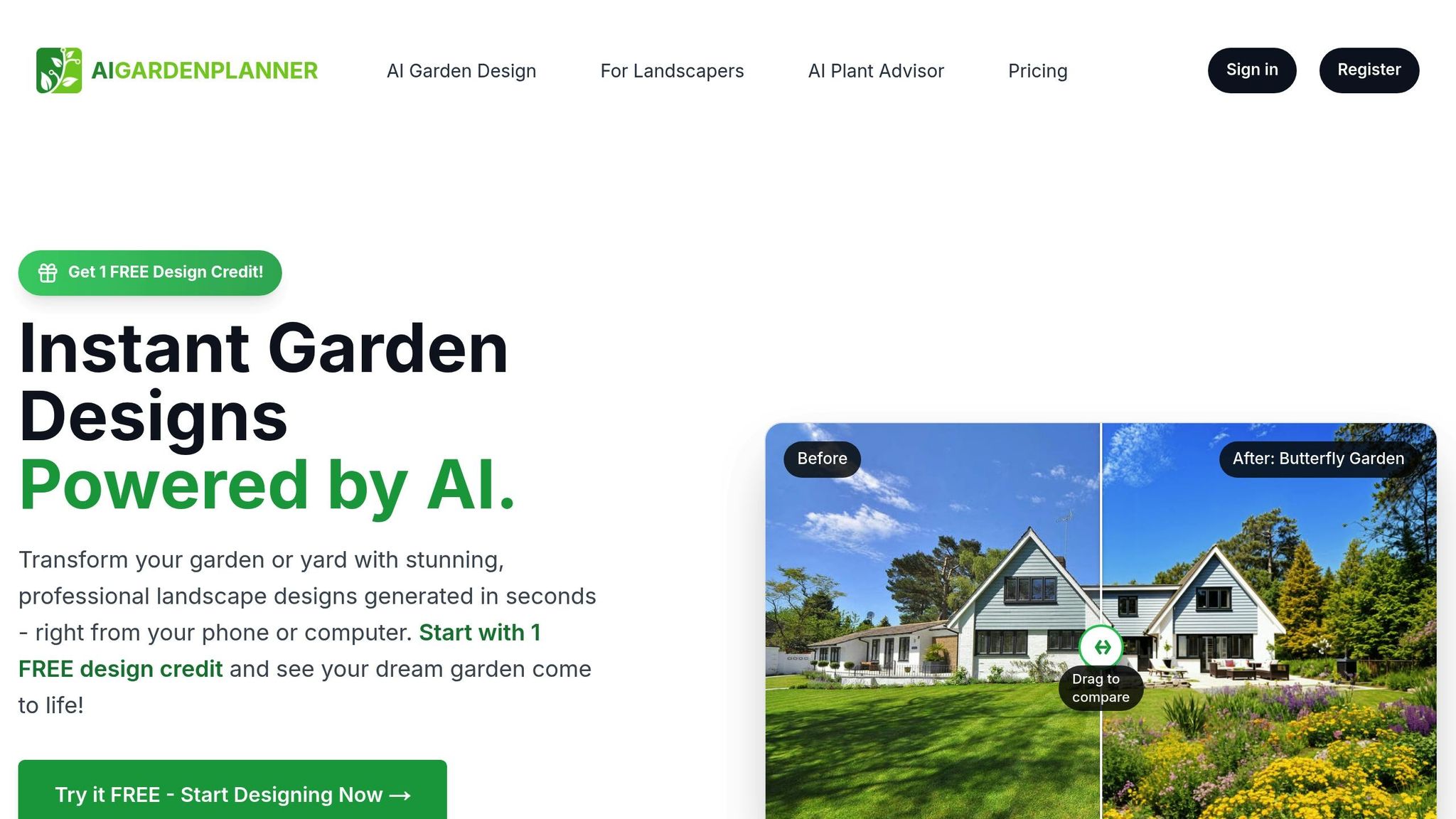
Managing large-scale operations goes beyond just the infrastructure - it also requires effective tools. AIGardenPlanner is designed to support extensive projects with AI-driven features that optimize sensor placement and crop decisions.
The AI Plant Advisor tool offers plant recommendations tailored to local conditions, factoring in climate and potential disease risks. This helps reduce the chances of outbreaks by selecting crops suited to specific microclimates.
For commercial users, AIGardenPlanner’s Pro and Premium plans provide licensing and support for managing multiple projects. This scalability is perfect for agricultural enterprises looking to oversee several fields or crop zones through a single platform.
Conclusion and Key Points
Multi-sensor systems are reshaping the way plant diseases are managed. These tools are shifting agriculture from guesswork to a proactive, data-driven approach that helps protect crops and reduce losses.
Key Points About Multi-Sensor Technology
The real power of multi-sensor systems lies in their ability to deliver reliable, consistent results by picking up subtle signals that manual inspections often miss. For instance, automated plant image classification has reached an impressive 97.7% accuracy, with sensitivity also at 97.7% and precision hitting 99.9% for segmentation tasks [3].
One of the biggest advantages is early detection. These systems can spot biological changes in plants long before visible symptoms appear, giving farmers a critical window to act. This is especially important for conditions like wheat leaf rust, which can slash yields by up to 25% if left unchecked [1].
Efficiency and scalability are other major benefits. Multi-sensor systems can quickly gather data over large agricultural areas, something that would be too time-consuming and costly to do manually. In precision agriculture, for example, using these technologies in potato farming has boosted economic profits by 21% and social profits by 26% compared to traditional methods [2].
Different sensors excel at detecting specific problems. Thermal cameras, for instance, have achieved a 92.8% accuracy in identifying disease-induced spots on banana leaves [2], while hyperspectral imaging has shown 79% accuracy in detecting pine wood nematode [2]. This range of capabilities allows farmers to choose the right tools for their specific crops and challenges, paving the way for even smarter, more integrated systems.
Future of Plant Disease Detection
The future of plant disease detection looks even brighter as sensors and AI continue to evolve. Machine learning algorithms are becoming more advanced, capable of analyzing massive datasets to predict disease outbreaks before they happen. This shift from reacting to preventing could redefine agricultural practices.
Edge computing is another game-changer on the horizon. By enabling sensors to process data on-site, decisions can be made instantly without relying on cloud processing. This not only speeds up response times but also lowers bandwidth costs, making these systems more accessible to farms of all sizes.
Platforms like AIGardenPlanner highlight how AI integration is enhancing sensor capabilities. These tools combine disease detection with AI-driven planting recommendations, helping farmers and gardeners make smarter decisions about what to grow and where to grow it - potentially reducing disease risks right from the start.
As precision agriculture continues to grow, multi-sensor systems will play a key role in enabling site-specific management. For example, targeted pesticide applications can ensure crop health while minimizing environmental impact.
With these technologies becoming more affordable and easier to use, the benefits of advanced plant disease detection are likely to reach beyond large-scale farms, empowering small-scale farmers and even home gardeners to protect their plants and maximize yields.
FAQs
How do multi-sensor systems make plant disease detection more accurate than traditional methods?
🎨 Visualize Your Dream Garden Today!
Transform any outdoor space into a professional landscape design in minutes. Just upload a photo, choose your style, and let our AI do the rest.
Start your garden transformation now →How Multi-Sensor Systems Enhance Plant Disease Detection
Multi-sensor systems take plant disease detection to a new level by combining data from different types of sensors, including spectral, thermal, and visual imaging. Each sensor captures unique details about plant health, and together, they create a more complete picture than any single sensor could provide on its own.
These systems can pick up on subtle changes in plants that might go unnoticed with traditional methods. By analyzing data from multiple angles, they allow for earlier and more accurate disease detection. This reduces false positives and ensures growers can make timely decisions to safeguard their crops and maintain healthy plants.
What challenges do small farms face when using multi-sensor systems to detect plant diseases?
Small farms frequently encounter steep initial expenses when it comes to buying sensors and establishing the infrastructure they need. These costs can make it hard for smaller operations to embrace multi-sensor systems. On top of that, many small-scale farmers may not have the technical know-how to manage and maintain these systems properly.
Another big hurdle is system integration. Combining various sensors and making sure they work seamlessly with the tools already in use can be a complicated process. For small farms, these challenges often slow down the adoption of advanced technologies for detecting plant diseases, even though such tools could greatly enhance crop health and boost yields.
How does AI improve multi-sensor systems for detecting and managing plant diseases?
AI plays a crucial role in boosting the effectiveness of multi-sensor systems by processing data from multiple sources like multispectral images, environmental factors, and plant health indicators. This enables the identification of diseases at an early stage - often before any visible signs emerge - and helps anticipate potential outbreaks.
By leveraging advanced algorithms alongside real-time data, AI enhances detection precision, uncovers plant-pathogen interactions, and facilitates targeted interventions. The result? Reduced crop losses and smarter disease management practices that benefit both farmers and gardeners.
Related posts
Related Articles

How AI Detects Irrigation System Faults
Explore how AI-driven irrigation systems enhance water management by detecting faults, optimizing usage, and boosting crop yields effectively.
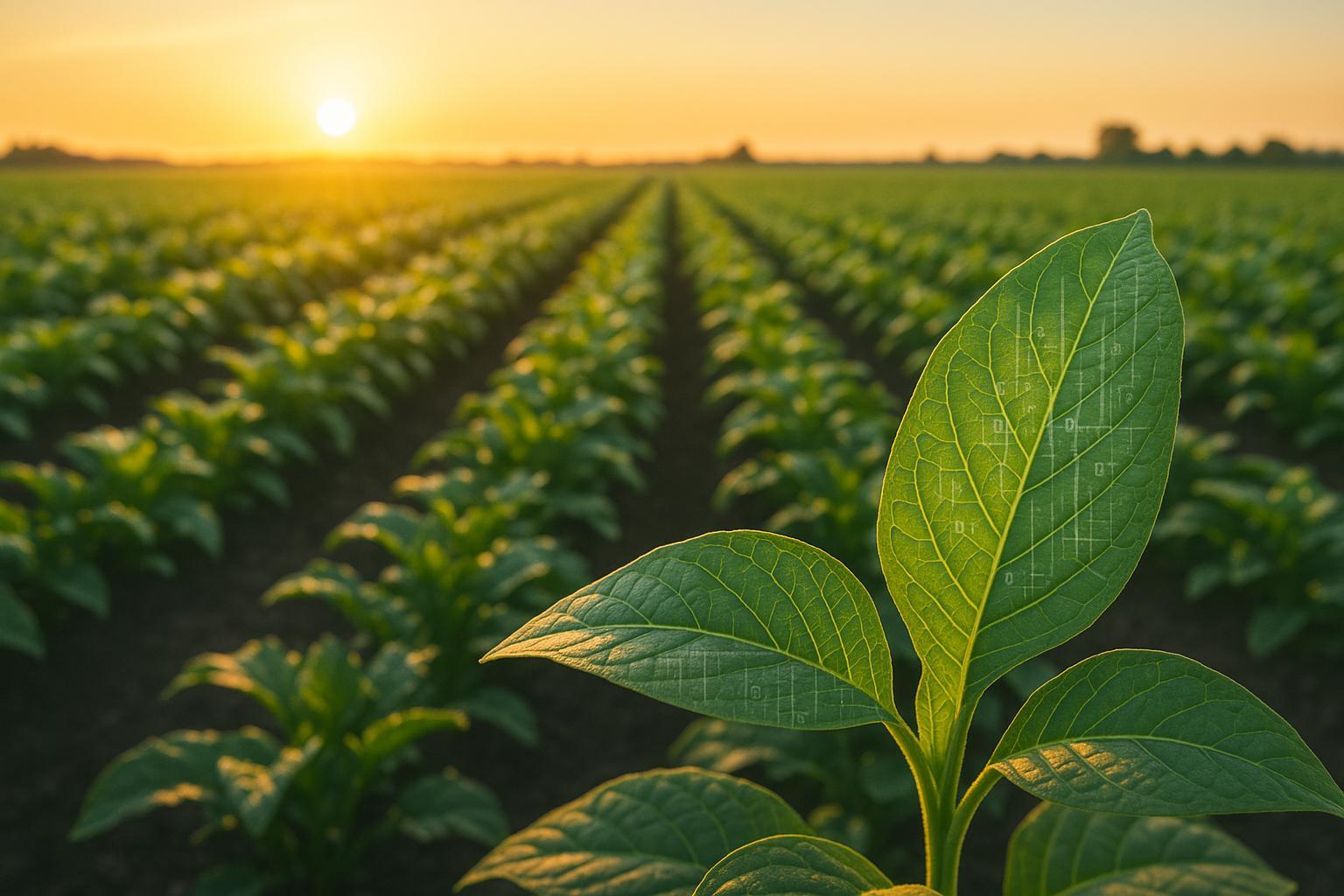
AI in Plant Breeding: Disease Resistance Insights
Explore how AI revolutionizes plant breeding, enhancing disease resistance and accelerating the development of resilient crops.
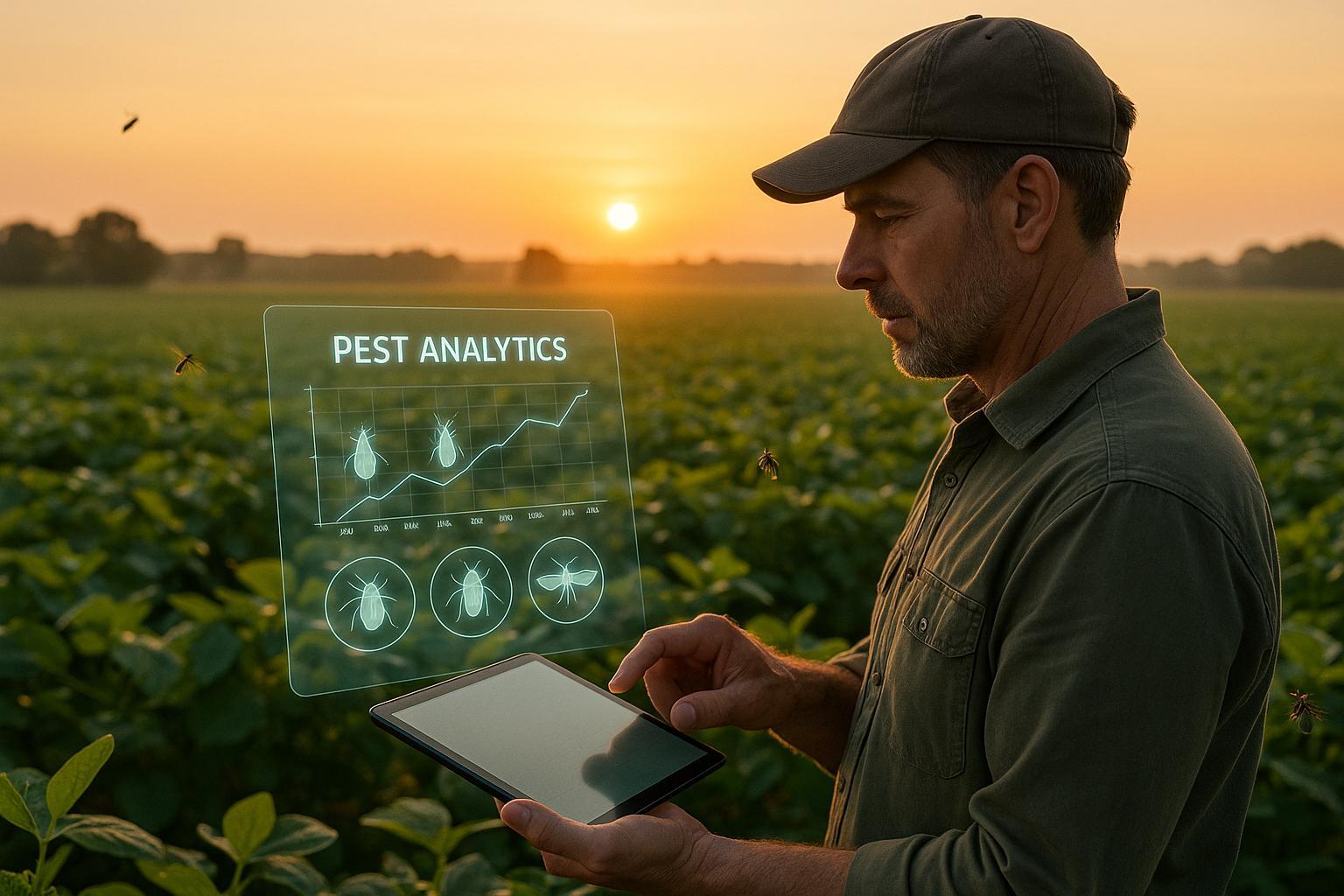
Real-Time Pest Analytics for Seasonal Yields
Explore how real-time pest analytics revolutionizes farming by enhancing yields, reducing pesticide use, and promoting sustainable practices.
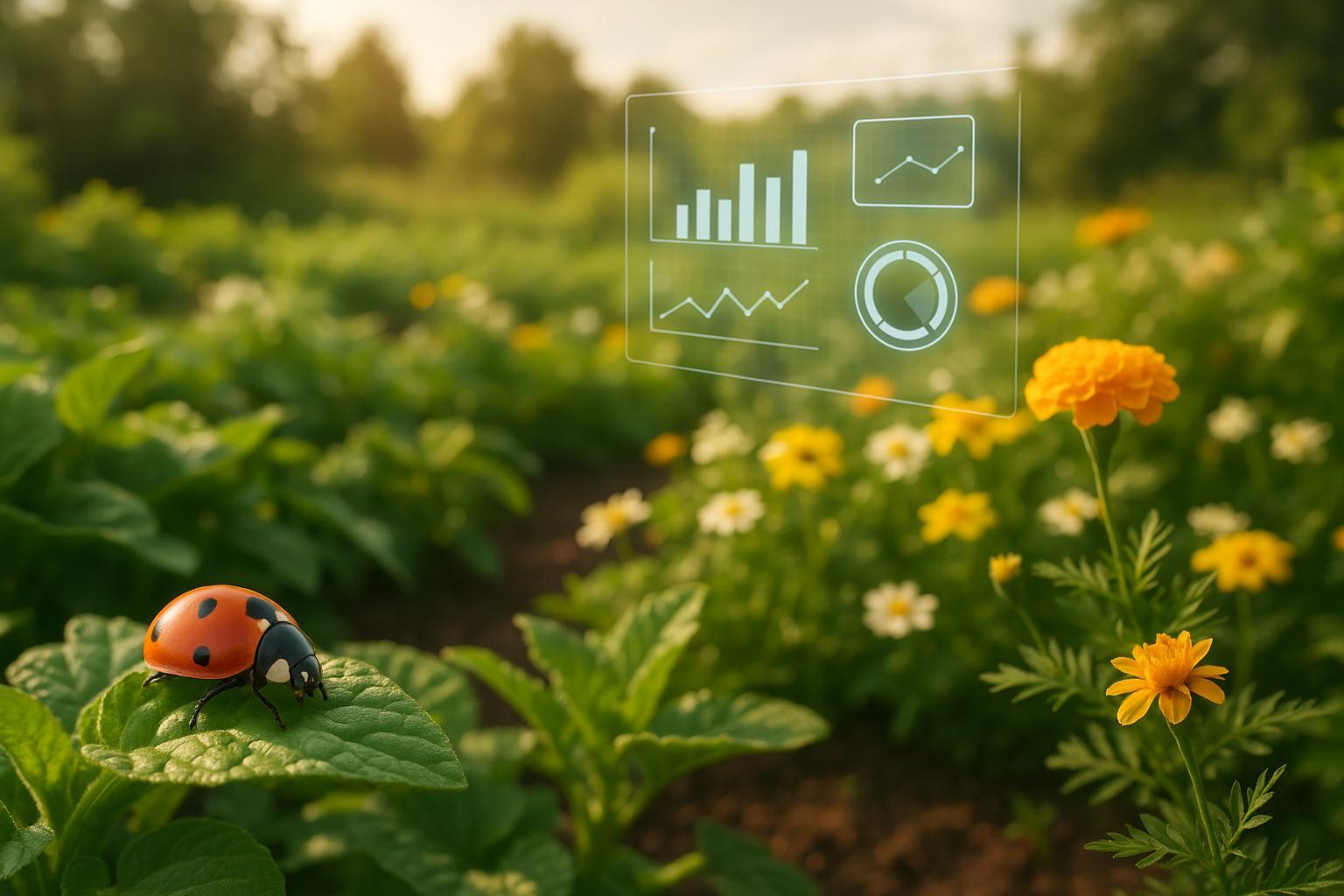
AI and Biological Controls: How They Work Together
Explore how AI enhances biological pest control, promoting sustainable gardening while effectively managing pests with minimal environmental impact.

Troubleshooting Vegetable Production Issues: A Guide to Boosting Garden Yield
Discover common reasons why your garden may not be producing vegetables and learn essential tips for troubleshooting and improving vegetable production. Explore the importance of soil preparation, watering practices, sunlight exposure, and pest management.
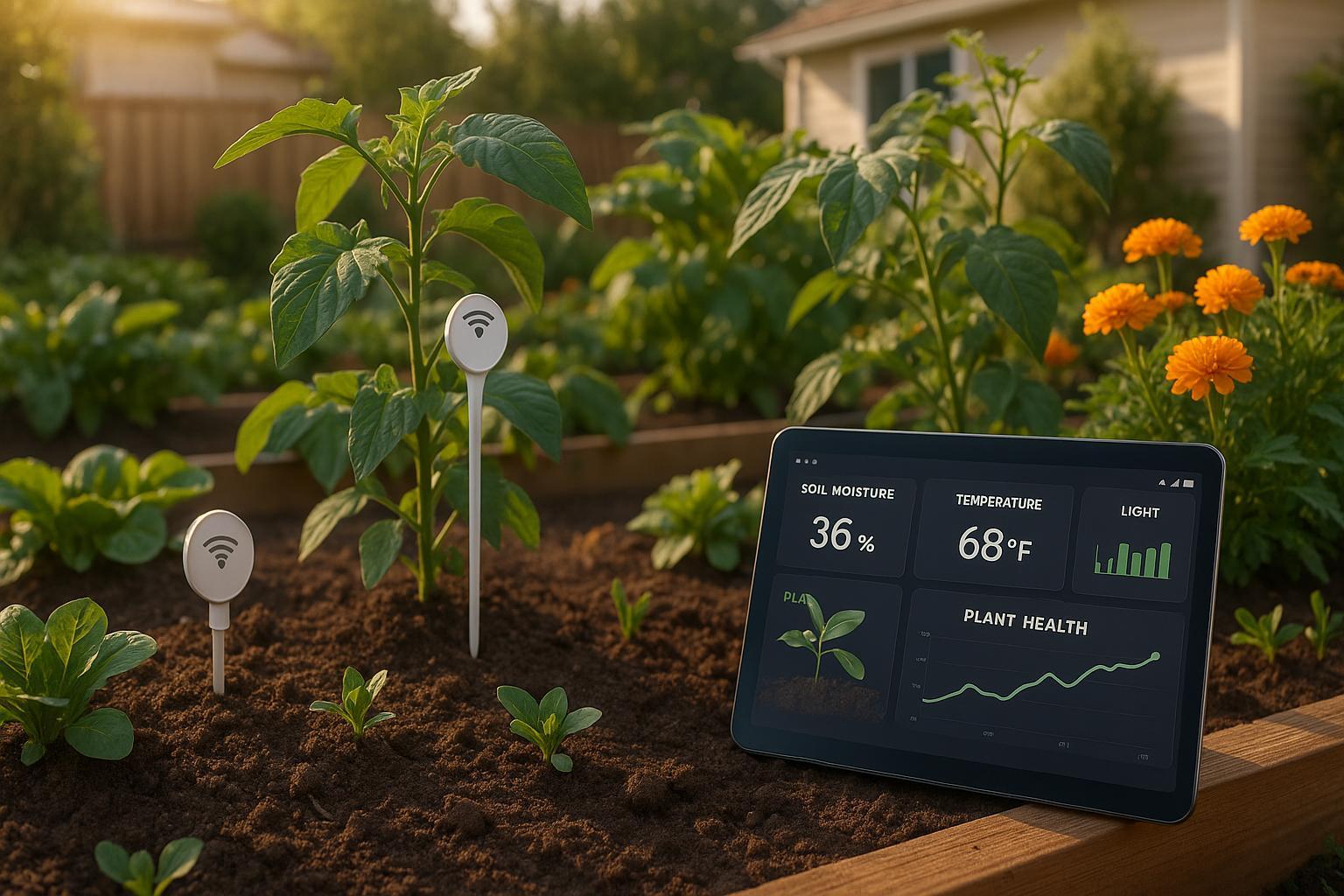
IoT Data Collection for Climate-Specific Gardening
Explore how IoT technology revolutionizes gardening by optimizing resource use, predicting diseases, and enhancing plant health for sustainable practices.